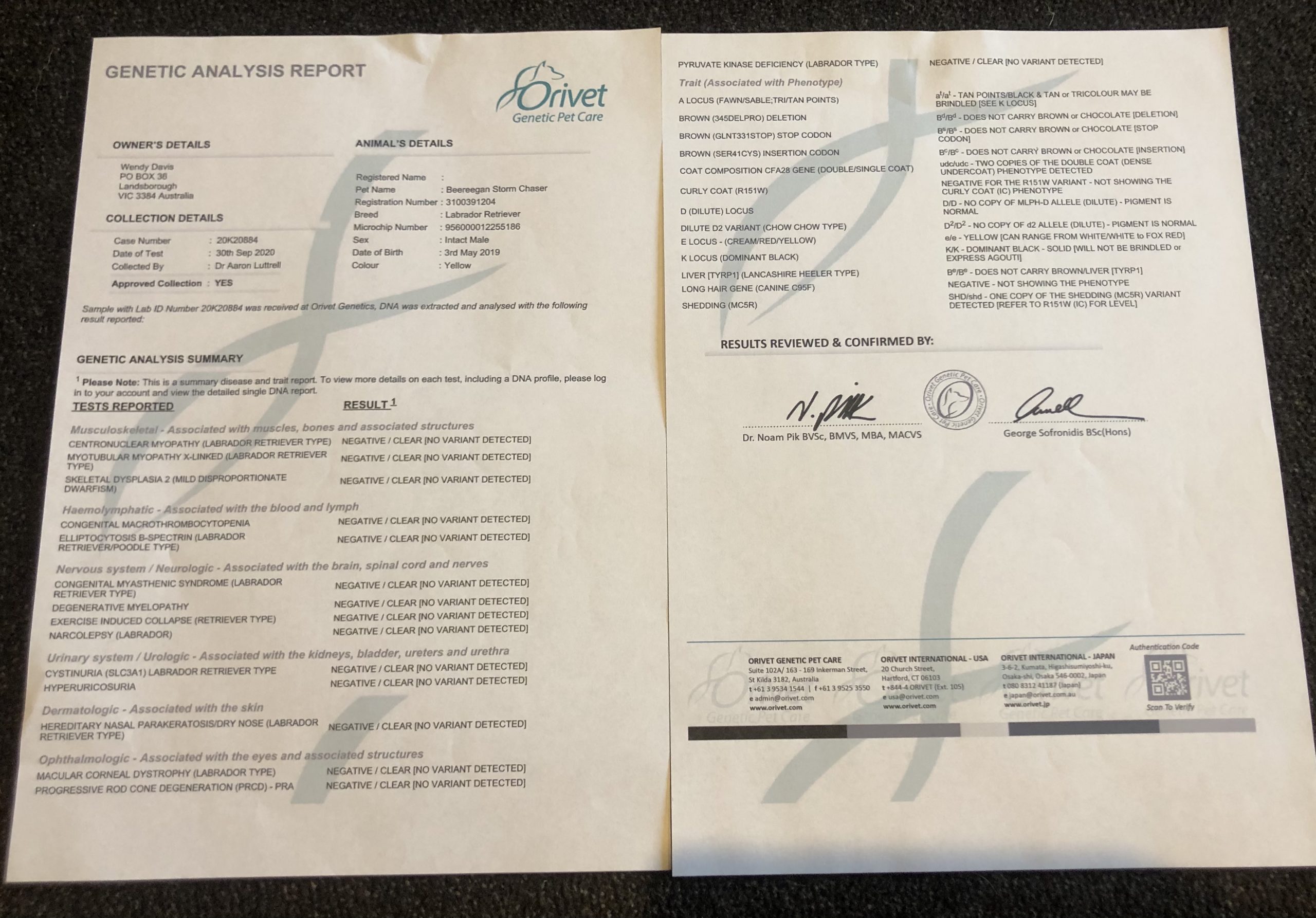DNA tests
Whilst DNA tests cover a range of conditions, once you know how to think about one result – you know how to think about them all.
Before we get into the separate conditions, let’s look at the possible results and what they mean…
DNA TEST RESULTS
There are three possible results of DNA tests:
- Clear – The dog does not have that condition, and will not develop it. Genetically, the dog has no trace of that condition. A Clear dog will not pass on any genes for the condition concerned.
- Affected – The dog has that condition, or will develop it. The dog may not be showing clinical signs of the condition yet, but they will go on to develop it. Genetically, they have it. An Affected dog should never be bred from, because they will (statistically) produce a percentage of Affected puppies, regardless of what dog they are bred with.
- Carrier – The dog does not have that condition, and will not develop it. But, genetically, they are a ‘carrier’ of it. If a Carrier is bred to another Carrier (or to an Affected dog), there will be (statistically) some Affected puppies in the litter. If a dog is a Carrier for a condition, they should only be bred to a Clear dog. Then there will be no Affected puppies in the litter.
- Should we avoid Carriers too? Should they be eliminated from the gene pool?
No. It would be a bad idea to stop breeding from Carriers, because it would limit the gene pool greatly.
Pedigree dogs already have restricted gene pools and we should not restrict those further by ruling out so many dogs.
Instead, it is important to DNA test, so that we know if dogs are Carriers. Then we can choose to breed Carriers only to Clear dogs. This will ensure a broad gene pool is maintained, but also that no Affected puppies will be produced.
An example of a Genetic test:
These are Beereegan Storm Chaser “Sully’s” DNA results

